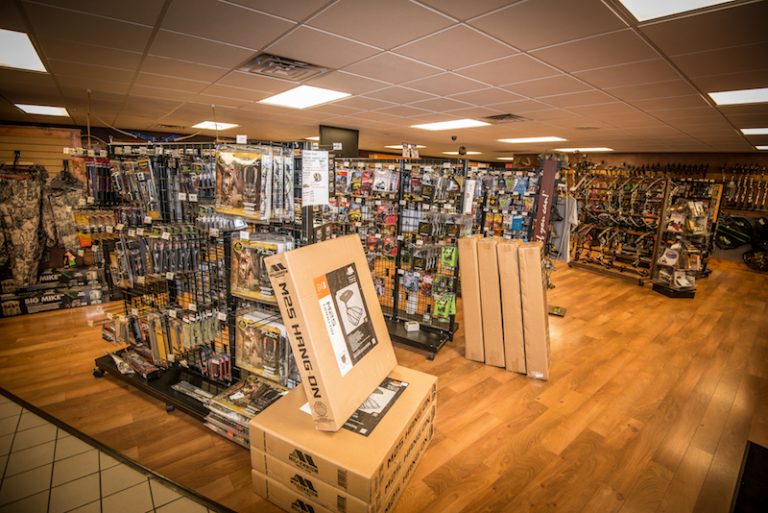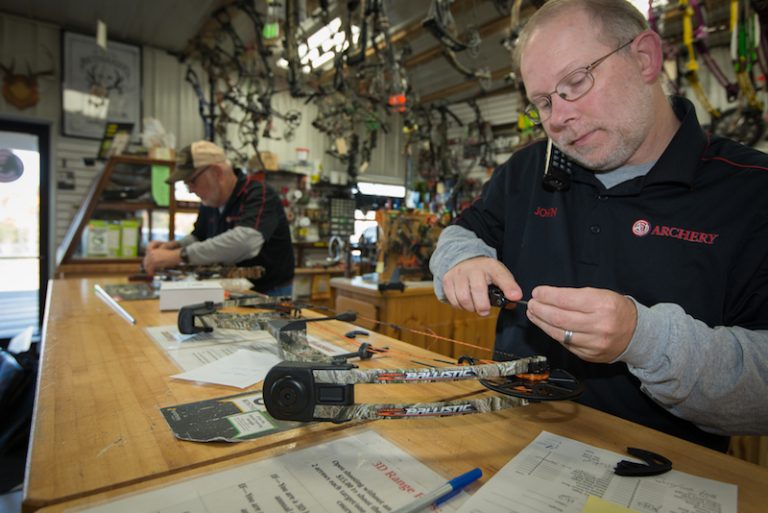Retail
5 Habits of Successful Retailers
Successful retailers intentionally instill habits that benefit their businesses.
Photo Credit: ATA
“We are what we continually do,” wrote Will Durant in “The Story of Philosophy.” “Excellence, then, is not an act but a habit.”
Habits are simply tasks we do regularly and automatically without thinking much about them. Some habits are good and some bad, but the important thing to understand about habits is that they all begin consciously. Although habits have great control over our lives, we control which tasks we perform regularly enough to make them habits.
Successful retailers understand that, and they intentionally instill habits that benefit their businesses. Here are five habits archery retailers use to sustain success.

Keep your inventory up-to-date with what your customers are buying. Photo Credit: ATA
Successful retailers know effective inventory management provides many insights into their businesses, and helps maximize profits.
You can manage your inventory with something as basic as Excel spreadsheets, but many retailers find that good point-of-sale systems pay off in time and labor saved. Whatever system you choose, remember that the more product information you track, the more data you have to make informed buying and pricing decisions. Fit Small Business offers a comprehensive review of retail inventory management best practices of product data you should record. Those data include costs, brands, suppliers, your internal SKU, regular and sale pricing, sales category or department, lead time for reordering, on-hand inventory, and other important information.
Keeping tabs on inventory gives you real-time information on products you have on hand, how quickly products sell, which products get returned the most, and which items generate top profits. Those insights help you decide when to hold sales, establish reorder points, stay on top of loss prevention, and make informed buying decisions.
You cannot compete with Amazon on price, selection (except for dealer-only brands), or even convenience. As a brick-and-mortar store, you’ll always lose if you try to match what Amazon does as a digital retailer.
Retailers must focus instead on the many things Amazon can’tdo. It can’t provide expert advice, informative seminars, quality bow-service work, or archery classes and leagues. It also can’t offer an archery range or events requiring a range. Retailers must exploit Amazon’s weaknesses by promoting the heck out of their advantages. When people want to know where they can rent equipment, shoot at archery ranges, register for an “Intro to Archery” course, or learn where a pro can measure their draw length, they won’t contact Amazon. Help them find your shop by advertising your services and your events. Amazon can’t touch that.

Community events are a great way to get your name out there. Photo Credit: John Heinz
Savvy retailers establish partnerships with state agencies, wildlife associations, parks and recreation departments, and even other local businesses. Partnerships increase a retailer’s visibility and foster goodwill within the community.
Nicole Nash, ATA manager of range and retail programs, says retailers can partner with wide varieties of businesses. “If you were promoting an event where food is involved, you might have a restaurant or sandwich shop cater the event,” she said. It’s a mutually beneficial relationship. While you promote your event, you’ll also promote your restaurant partner. Meanwhile, the restaurant could mention your event on social media. That helps you reach that restaurant’s customer base in addition to your own.
Today’s most successful retailers understand that social media — and other online marketing like daily deals websites— provide effective and budget-friendly ways to reach and influence consumers. If you need proof of social media’s effectiveness, look no further than MoonPie. The brand has long been a favorite of baby boomers, but it struggled to reach younger consumers. Instead of changing its product (it’s not a brand positioned for innovation), it changed its marketing. MoonPie’s hilarious tweets earned it 284,000 Twitter followers and a 17% increase in sales in 2017.
Social media let you target consumers by age, location and interests, which means putting your brand in front of people you wouldn’t otherwise reach. If you’re new to social-media marketing, the Small Business Administration offers a free online course to help you get started.

Keep up with the demand of the market and adjust accordingly. Photo Credit: ATA
Even businesses that do well in the short term often struggle in the long run. That’s because as the world evolves, formulas that worked initially often lose their punch over time. Successful retailers remain adaptable, changing their business plan to reflect changes in retailing’s landscape.
A big part of that is continual education. Smart retailers grab opportunities to learn every chance they get.
If you want your shop to find long-term success, use every resource available. Attend the annual ATA Trade Show and visit the myATA area to learn about programs that benefit your shop. Get certified to teach archery. Network with other retailers and learn which strategies work for their shops. Get expert advice at the free ATA Seminar Series.
You should also visit the ATA’s member Resource Website, where you’ll find a wealth of free, downloadable documents to help you capitalize on new growth opportunities. If you need additional help, contact the ATA at (866) 266-2776.

WE ARE HERE TO HELP THE INDUSTRY, TO HELP INDIVIDUAL BUSINESSES GET THE MOST OUT OF THE INDUSTRY, AND TO HELP YOU.